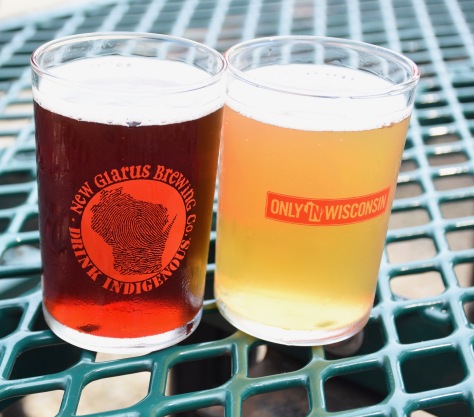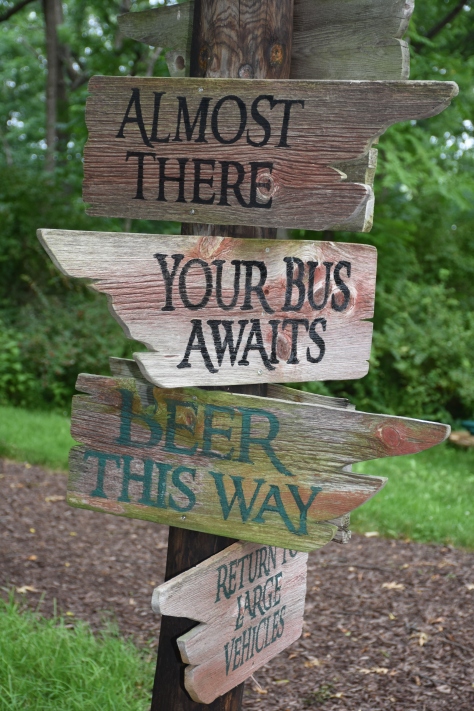Though it’s called “driftless” the terrain of southwestern Wisconsin makes an ideal road trip for people who love to drift and explore.
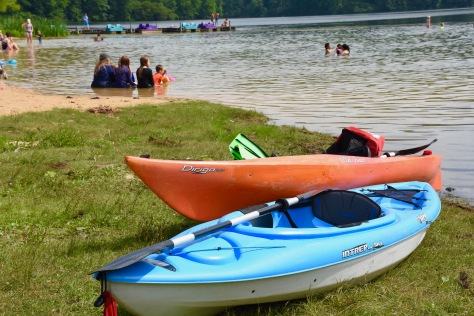
Ten thousand years ago, the Ice Age took a detour around southwestern Wisconsin. That’s why it’s called the Driftless Area. Without the glacial deposits of rock, clay, sand and silt called drift that flattened the rest of the upper Midwest, this region’s winding backroads reveal picturesque limestone bluffs, spring-fed waterfalls, blue-ribbon trout streams and a rolling pastoral landscape—all nurturing iconic small towns, interesting people and acres of happy cows.
Located halfway between Chicago and Minneapolis, and encompassing roughly a quarter of the state, Wisconsin’s Driftless Area packs in an eclectic blend of natural beauty, outdoor action and culture. The region’s most famous citizen, architect Frank Lloyd Wright, built his home and studio here, called Taliesin. Wright said of the area, “I meant to live, if I could, an unconventional life. I turned to this hill in the Valley as my grandfather before me had turned to America – as a hope and haven.” Little did he know the area would become a favorite for anyone who enjoys fishing, birding, biking, hiking and more.
But it’s easy to overlook the Driftless. We’ve blasted by it countless times on the way to Chicago, Madison or Milwaukee from our home in Minneapolis, always thinking “gotta go there.” So this time, forgoing the cities, we made the Driftless our destination, dipping south from I-90 to explore the region at our own meandering pace.
Finally, for those who like to imagine their destination before they go, several books give an accurate idea of the Driftless. David Rhodes’ prizewinning novels Driftless and Jewelweed beautifully capture the people and the land of this region and Nancy Horan’s Loving Frank offers an account of Frank Lloyd Wright’s life in Chicago and Wisconsin.
Parks & Rec
Our route followed State Road 23 to Governor Dodge State Park, located between Spring Green and Dodgeville, which we made our basecamp for the trip. Named after General Henry Dodge, the first territorial governor of Wisconsin, the park contains over 5,000 acres of idyllic natural beauty.

At Governor Dodge we hiked up cliffs, under waterfalls, over fields of grass and wildflowers and along spring-fed creeks where you can step into the cool air of the old spring houses that early settlers built as natural refrigerators. When we weren’t feeling so ambitious, we cooled off in the park’s two lakes which have large picnic areas, fishing, and boating (electric motors only). The Dodgeville Kiwanis club operates a concession stand at Cox Hollow Lake offering boat and canoe rentals as well as treats such as pizza and king-sized ice cream cones at a bargain price. That lake also features a dog beach just right for our golden retriever, Duffy, and other wet, ball-chasing friends.
Yet, due to its unique geology and abundant rivers and streams—the Mississippi, Wisconsin, Kickapoo and Baraboo, to name a few—the Driftless region abounds with recreational opportunities beyond the boundaries of its state parks. Over forty percent of North America’s migrating birds pass through the area annually along the Mississippi River Flyway because of its abundant water and vegetation. Depending on the time of year, sandhill cranes and bald eagles nest on the riverbanks while tundra swans and white pelicans stop in for a visit. Smaller species from orioles to ruby-throated hummingbirds make their home here, too.
Along the Driftless Area’s northern edge is the Elroy Sparta State Trail, a family-friendly three-tunnel bicycle trail that has been inducted into the Rail-Trail Hall of Fame. To the south, cyclists may ride the Military Ridge State Trail from Dodgeville all the way to Madison. Prefer paddling to pedaling? The many rivers flowing here make it paddlers’ heaven and there are canoe/kayak liveries in Ontario, Rockton, La Farge, Readstown, and Prairie du Chien, among others.
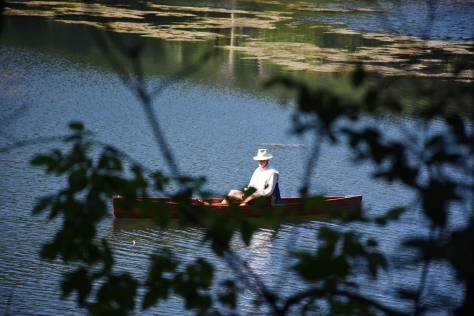
Finally, the Driftless area is known for thousands of miles of designated trout streams that Outdoor Life called “the best kept secret in the trout world.” And, for fisherfolk who prefer boats to waders, area lakes and and rivers offer walleye, smallmouth bass, and northern pike as well as panfish, including bluegill, crappie, and rock bass in abundance.
The Wright Stuff
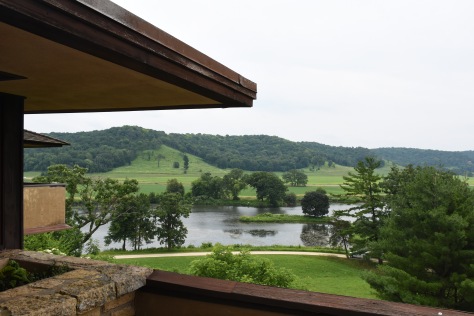

One reason the Driftless area is so appealing is that visitors can weave a love of the outdoors with opportunities to enjoy the area’s fascinating culture and history. Those things come together just outside Spring Green at Frank Lloyd Wright’s 800-acre estate, Taliesin (Welsh for “shining brow”). As a child Wright spent summers in this valley on his uncle’s farm where he witnessed the patterns and rhythms of nature. He incorporated his observations of nature’s design into his philosophy of “organic architecture” maintaining that a building should be suited to its environment, purpose and time. Wright’s Prairie Style, so prominently displayed at Taliesin, is considered the first uniquely American architectural style and he expanded and refined those ideas in his studio and school for architecture here, concepts that continue to influence architecture around the world. That’s why the United Nations Educational, Scientific, and Cultural Organization (UNESCO) recently named it a World Heritage site. See my post on Frank Lloyd Wright homes.
Taliesin is only available via guided tours that start from the visitors center and go by bus across the road to the estate. Strolling outside Wright’s home, with dramatic horizontal lines and limestone construction that seems to rise straight from the land, it’s easy to understand his thinking. A house, he said, should be “of the hill. Belonging to it. Hill and house should live together each the happier for the other.” Inside, Wright’s starkly simple interior spaces offer commanding views of the valley. The tours downplay it, but many stories from Wright’s own life add to the drama of Taliesin. For example, 1914, while Wright was away, a worker at the estate murdered seven people and set the house on fire. Read about it in Nancy Horan’s somewhat fictionalized bestseller Loving Frank.

Over-the-Top on the Rock
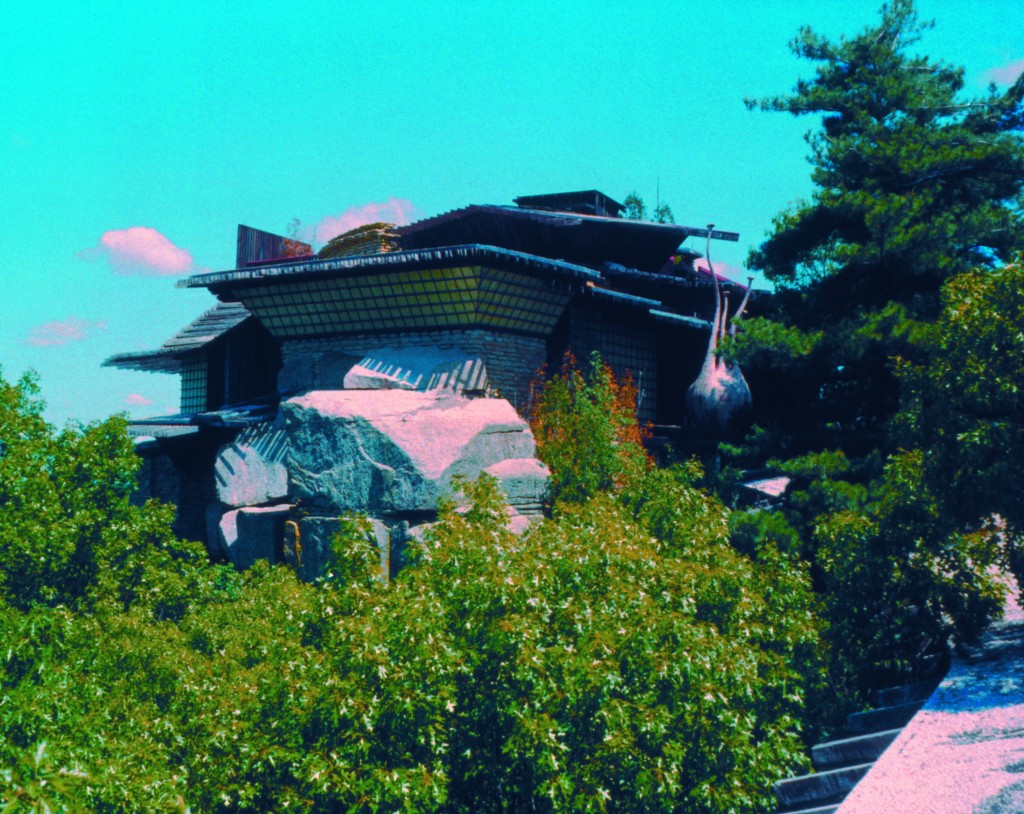
Not far from Taliesin, but light years away from Wright’s austere aesthetic, Alex Jordan built his House on the Rock atop a chimney-like rock formation. Leading his own “unconventional life,” Jordan started building his dream house in 1945 and kept adding until it resembled, as one Boston Globe writer said,”the lair of a 1970s James Bond villain,” a testament to over the top excess.
Inside Jordan’s home, opened to the public in 1960, you’ll see his lifetime of collections including the world’s largest indoor carousel with 269 carousel animals and 182 chandeliers. Also on display: 200 model ships, a 200-foot tall sea creature, hundreds of musical instruments, model airplanes, dolls and suits of armor. And, don’t miss the glassed-in Infinity Room that extends 218 feet over the valley floor. Kitsch, or art, depending on your taste, it’s like nothing you’ve ever seen.
From Taliesin or the House on the Rock, you’ll want to swing into Spring Green, a great place to get supplies, artsy gifts and to visit its excellent book store, Arcadia Books.
A Taste of Switzerland

From Spring Green it’s about 45 miles southwest to New Glarus, a bit of Switzerland transplanted to Wisconsin. Swiss immigrants came to the area in 1845 from the Canton of Glarus and settled here because they found the region similar to home, just without the Alps. You’ll feel like yodeling when you see the town’s Swiss-inspired brown and white architecture adorned with happy cow statues and window boxes filled with red geraniums. The town displays its heritage to the fullest during its many festivals including the Wilhelm Tell Festival, Polkafest, the Heidi Folk Festival and, naturally, Octoberfest. New Glarus celebrates its 175th anniversary in 2020.

Even if Ieiderhosen and polka dancing aren’t your thing you’ll enjoy New Glarus’ history on display at the Swiss Historical Village, a collection of 14 buildings where tours and exhibits trace the Swiss colony’s growth into a prominent dairy farming community. And if the way to your heart is through your tummy, you’ll fall in love with New Glarus’ authentic Swiss bakeries, butcher shops and restaurants . For our campsite dinner we stocked up on cheese at the Eidelweiss Cheese Shop, Swiss sausages at Ruef’s Meat Market and an assortment of gorgeous leckerli, bratzeli, and pfeffernüsse cookies from the historic New Glarus Bakery.
Wisconsin wouldn’t be Wisconsin without breweries and one of the state’s best is the New Glarus brewery on the south edge of town. We walked from the parking lot up to the brewery’s hilltop site with beautiful views of the surrounding countryside from its rustic outdoor terraces. We sampled flights of Spotted Cow ale, Two Women lager, and fruity beers that are their specialties.
Artisans and Artists

Without the layers of glacial rocks and sand, the Driftless Area’s lodes of lead, zinc and other minerals rested tantalizingly close the the surface attracting miners from Cornwall, England in the early 1800s to what is now the town of Mineral Point. The story goes that the first of these prospectors made shelters in makeshift holes in the ground called Badger holes, thus giving the state its nickname.

They didn’t remain in Badger holes long, however, because these miners brought with them expertise in stone building construction. Their sturdy and fireproof stone legacy remains the trademark of Mineral Point. The city was listed on the National Register of Historic Places in 1971 and the National Trust for Historic Preservation called the town one of America’s “Distinctive Destinations.” Another Cornish legacy: the pasties (meat pies) and figgyhobbin, a cinnamon and raisin pastry concoction you can savor at Mineral Point’s Red Rooster cafe.
Mining faded, leaving the historic buildings empty until 1935 when two foresighted gentlemen, Bob Neal and Edgar Hellum, began restoring a group of stone houses, now called Pendarvis, on Shake Rag Street. You can visit the buildings and hike the 43 acre Merry Christmas Mine Hill Trails & Prairie to see remnants of mining equipment along with one of the largest restored prairies in southwest Wisconsin. Over the years, artists have continued Neal and Hellum’s work, taking up residence in derelict buildings and turning them into art studios. Now, the 70-plus artists who reside in Mineral Point are delighted to show you their work and share their stories. In addition, anyone who wants to foster their creative side is welcome at Shake Rag Alley Center for the Arts where they offer classes that range from blacksmithing to fiber art, pottery, photography and much more. Even non-students are welcome to stroll Shake Rag Alley’s collection of historic buildings and its oasis of trees and gorgeous gardens.
You’ll find more of the Driftless Area’s natural beauty and local culture along its scenic rural roads. Dozens of small family farms, seemingly plucked straight from a Norman Rockwell gallery, dot the landscape and many supply award-winning farm-to-table restaurants in Chicago, Minneapolis and Milwaukee. Amish buggies and Mennonite roadside stands with crafts and baked goods evoke a simple, local lifestyle. In the warmer months, music lovers can enjoy a variety of outdoor festivals, especially Larryfest, a terrific annual festival of bluegrass, folk and old-time music in LaFarge.
So what’s the best way to enjoy the Driftless? Ironically, by just drifting through it. Meander. Stop and sample. Meet the locals. Transport yourself back to a simpler, yet surprisingly rich, time and place. And be thankful for those wonderfully fickle glaciers.
If You Go:
Wisconsin’s Driftless area makes a great getaway for every kind of traveler, even the family dog. Wisconsin state parks welcome well behaved dogs on leashes and Governor Dodge state park has a special dog beach. Most bars and eateries welcome leashed pets on their outdoor patios. All of the sites mentioned in this article have easy parking for large vehicles and trailers. As with most of the Midwest, the Driftless area can be humid and buggy in summer, so come prepared with insect repellent and a fan.
Wisconsin State Parks are very busy in summer and during the fall leaf-peeping season, so book in advance with the Wisconsin State Park System Reservations site https://wisconsin.goingtocamp.com
Wisconsin State parks with camping in the Driftless area include:
Governor Dodge https://dnr.wi.gov/topic/parks/name/govdodge/
Wildcat Mountain https://dnr.wi.gov/topic/parks/name/wildcat/




